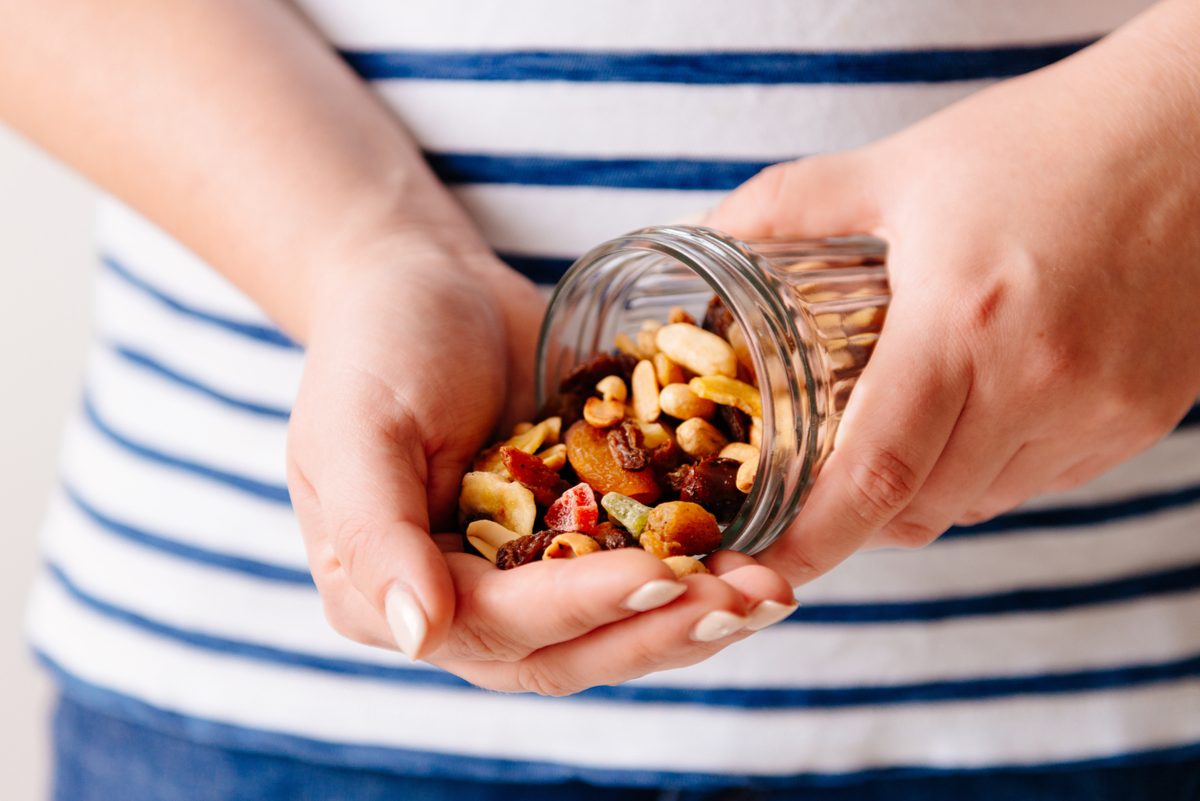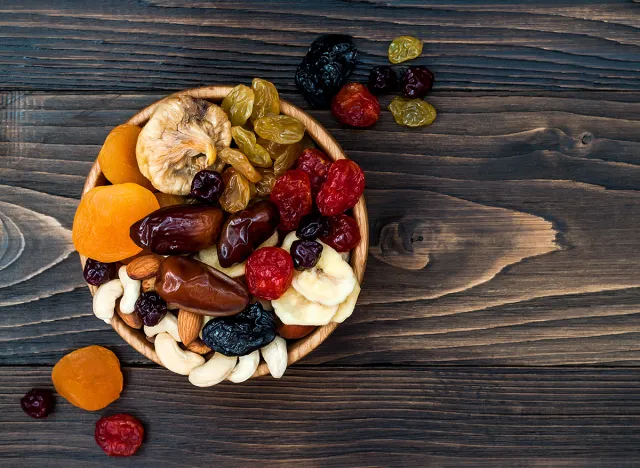This Popular Grocery Item Is Linked to Foodborne Illness, Says New Study

If you're someone who loves eating dried fruit as a snack between meals, grabbing a handful of your favorite seeds or nuts on the go, or throwing granola or cereal on top of a bowl of yogurt, then you're a fan of what is called low-moisture foods.
While these types of packaged foods are extremely popular and delicious, they've unfortunately been known lately to carry harmful pathogens such as Salmonella. In fact, according to The Journal of Food Protection, salmonella is so common among low-moisture food products and can survive for extended periods of time there because of poor sanitation practices, faulty equipment, and lackluster ingredient monitoring.
Because of these Salmonella outbreaks, the Institute for the Advancement of Food and Nutrition Sciences is helping to support multiple research endeavors around this subject in order to find better solutions and practices for preventing these outbreaks in the future.
Here are some of their key findings around preventing Salmonella outbreaks, and for more healthy eating tips, check out 4 Meat Companies with the Worst Food Quality Practices.

One study cited by IAFNS was published in the International Journal of Food Microbiology in 2020 and dealt with finding new decontamination practices. Researchers looked at Salmonella and Listeria monocytogenes (another serious infection found in many foods) on things like dried strawberries and apples, raisins, pistachios, and chocolate.
The study utilized two new methods of decontamination: one that involved UV radiation, ozone, and peroxide, and another that involved ethanol sanitizer. According to IAFNS, both of these decontamination methods may have a valuable impact on the future of food-borne infections.
Another study supported by IAFNS was also published in the International Journal of Food Microbiology. Instead of dealing with decontamination tactics, this study looked further into the survival temperatures of Listeria monocytogenes on things like raisins and dried strawberries.
What the study found was that storing these items at 23 degrees Celsius (which is about 73 degrees Fahrenheit) helped to inactivate the bacteria. However, at 4 degrees Celsius (or 39 degrees Fahrenheit), the Listeria monocytogenes were able to survive for long periods of time.
And lastly, a 2022 study from Applied and Environmental Microbiology found that many traces of Salmonella on dried fruit specifically were not detectable by cultures, even though they were viable.
So what does all of this mean for us? Unfortunately as of right now, there isn't much we can do as individuals to limit our exposure unless we specifically avoid low-moisture products. However, these studies and the dedicated research that are continually being done are promising for a safer future when it comes to food born illnesses and infections.









